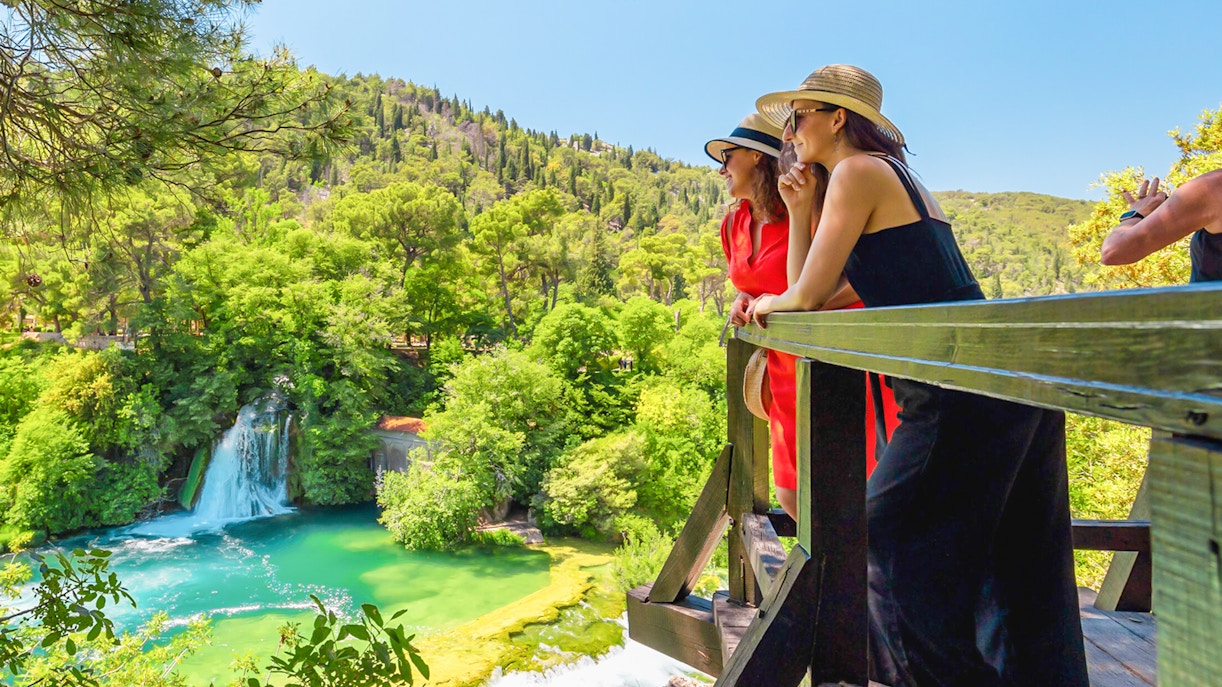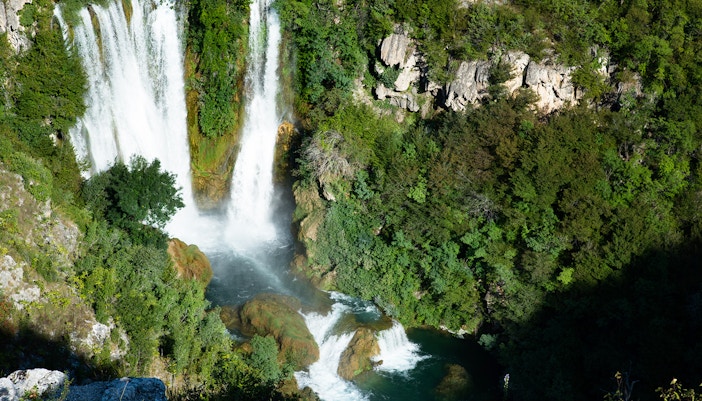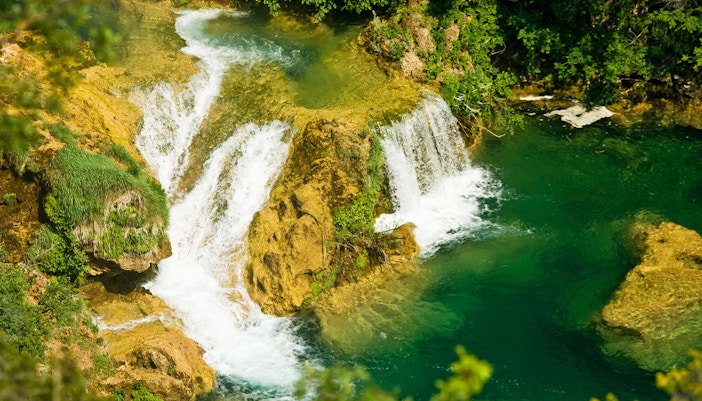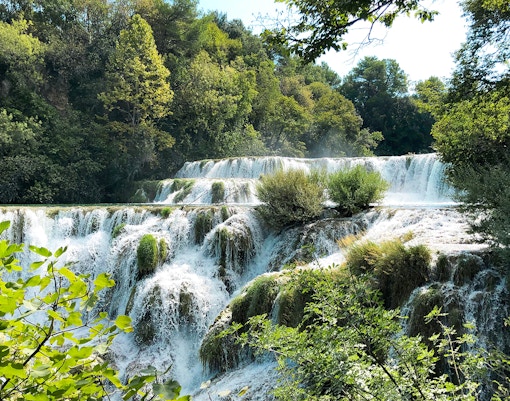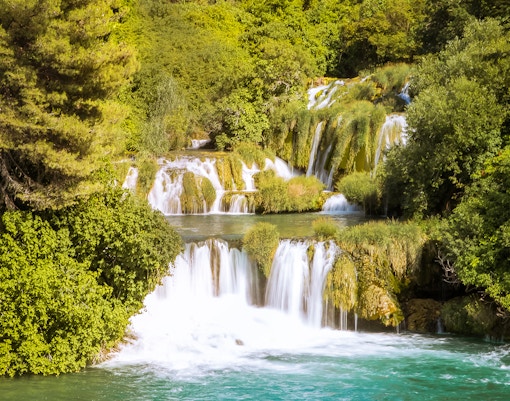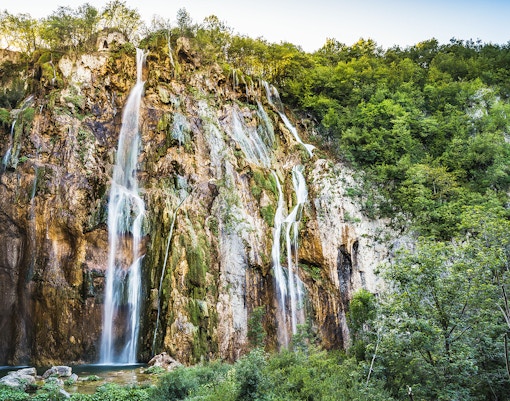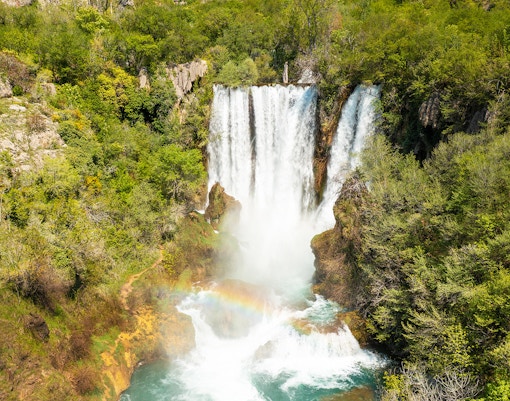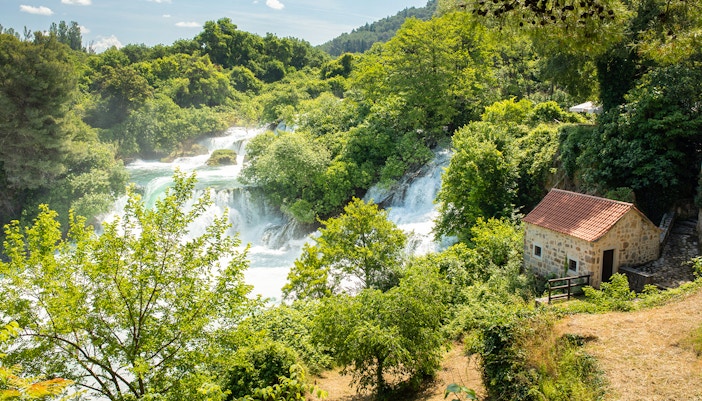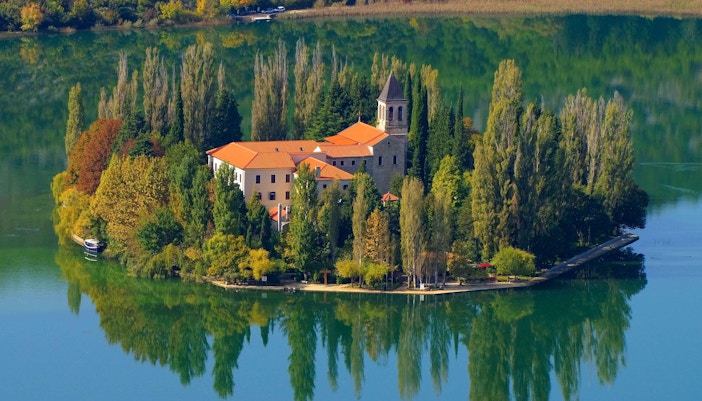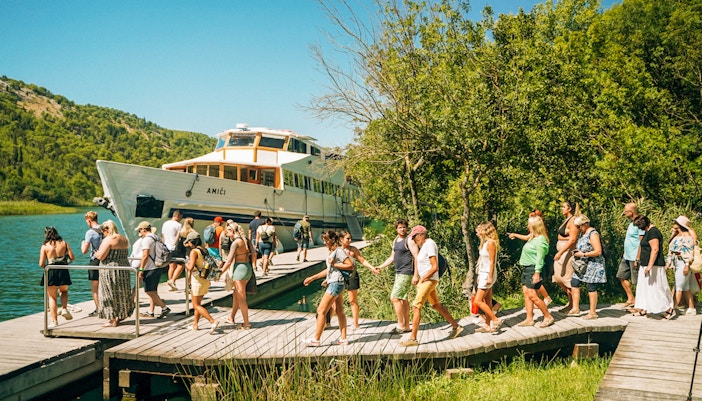Unspoilt natural beauty: The raw splendour of the Krka waterfalls truly takes your breath away, especially when seen up close. The aquamarine waters of the river, the high walls of the canyon, and the verdant forests add to the park’s beauty.
Unique tufa landscape: The karst geology of the region in which Krka National Park is located has resulted in the formation of tufa or travertine barriers due to limestone erosion. Croatia is one of the few places in the world to have this unique geological landscape.
Abundant flora and fauna: Krka National Park is home to over 1,000 species of plants, 229 bird species, 18 species of fish, and 46 species of mammals, including deer, olm, and several endemic species of bats. If you’re a wildlife enthusiast, this park is a must-visit.
